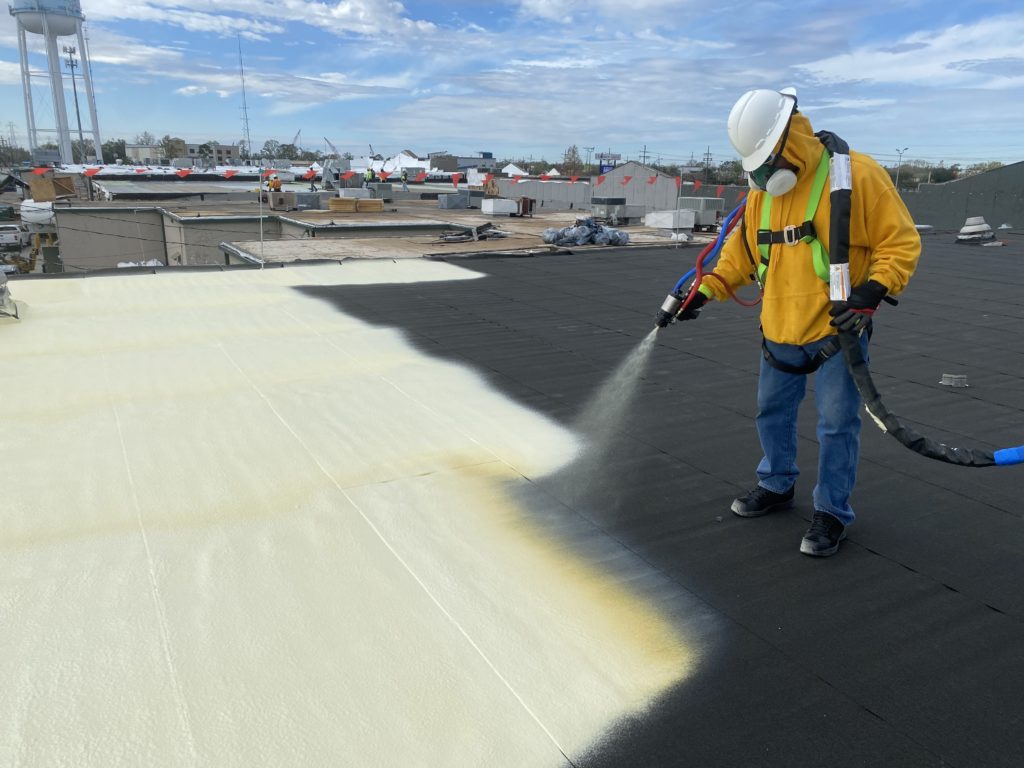What Are Elastomeric Roof Coatings? [A Beginner’s Guide]

Introduction
Traditionally, elastomeric coating manufacturers specialize in producing coatings for exterior surfaces, including concrete, masonry walls, and stucco. They are popular for commercial, residential, and industrial buildings due to their durability and versatility.
Elastomeric roof coatings are liquids significantly thicker than paint but equally easy to apply. In addition, these coatings contain more solids than traditional paint and are waterproof, making them a more versatile and hard-wearing option.
This guide will discuss the different types of products available from elastomeric roof coating manufacturers and outline how they are applied and used.
How are elastomeric roof coatings used?
Elastomeric coatings have the capacity to stretch to more than twice their original length, and they are up to 10 times thicker than standard paint. They are applied to existing roof systems to create a new, robust, waterproof membrane.
As the coatings are waterproof, they can be used to seal holes and cracks to prevent further damage and increase roof strength. They also lower the risk of wear and tear, UV damage, and erosion caused by the weather and changes in environmental conditions.
White roof coatings reflect sunlight to keep buildings cool in hot weather, while gray coatings can help to keep buildings warm in cold weather. In many cases, these coatings offer a cost-effective alternative to repairing or replacing a roof.
Types of elastomeric roof coatings
There are four main types of products provided by elastomeric roof coating manufacturers. The different types of elastomeric roof coating mean that contractors can utilize materials suited to each project, considering factors such as environmental conditions and the roof’s slope. Types of elastomeric roof coatings include:
- Polyurethane
Polyurethane, also known as urethane, is a popular choice for contractors working on commercial or industrial projects involving high-traffic areas as they are incredibly durable.
Polyurethane roof coatings can withstand a lot of traffic and are more resistant to temperature changes and weather conditions than other materials. This makes them a solid choice for buildings in areas that experience hot, dry summers and cold, wet winters.
- Silicone
Silicone elastomeric roof coatings typically contain 90% solids, so less product is required during application to achieve the desired dry mil thickness.
The high solid content also makes surfaces more resistant to environmental conditions and slows the erosion rate, delivering long-term results. Silicone creates a highly flexible, monolithic, and impermeable membrane capable of withstanding sand and debris in the wind, oxidation, and extreme temperatures. They can also endure the natural expansion and contraction (thermal movement) that occurs in large roof structures.
- Acrylic
Acrylic elastomeric roof coatings are water-based and are applied to sloped roofs. The main advantages of acrylic roof coatings are their reflective capabilities, which make them ideal for areas with high UV exposure, and their durability. Acrylic elastomeric roof coatings are best suited to roofs with effective drainage systems, as they don’t handle pooling well. Some products contain biocides, which help prevent mold and mildew growth.
- Butyl
Butyl roof coatings are made using isobutylene, which is converted into rubber before turning into a liquid. The primary benefit of butyl roof coatings is their flexibility, but they can also withstand ponding, which is advantageous for roofs and surfaces that don’t have good drainage.
The main downside is the environmental impact of both manufacturing and disposing of butyl.
How long do elastomeric roof coatings last?
Typically, elastomeric roof coatings last between 10 and 20 years. To maintain the best results, checking the roof regularly is important. Annual inspections can flag early warning signs and reduce the risk of damage and the need for repairs.
Elastomeric roof coating application
Although elastomeric roof coatings are applied like conventional paint, it’s wise to seek professional help when adding coatings to the roof. Expert contractors have the knowledge and experience to apply the coating seamlessly and efficiently, determining the best type of coating for the project and ensuring long-lasting results.
Summary
Elastomeric roof coatings can prolong the lifespan of roofs and strengthen surfaces to make them more resistant to the weather and general wear and tear. Applied like paint, these roof coatings are durable, flexible, and versatile, lasting up to 20 years and beyond.
If you are interested in finding elastomeric roof coating manufacturers, don’t hesitate to contact Rugged Coatings for more information.


